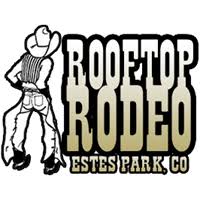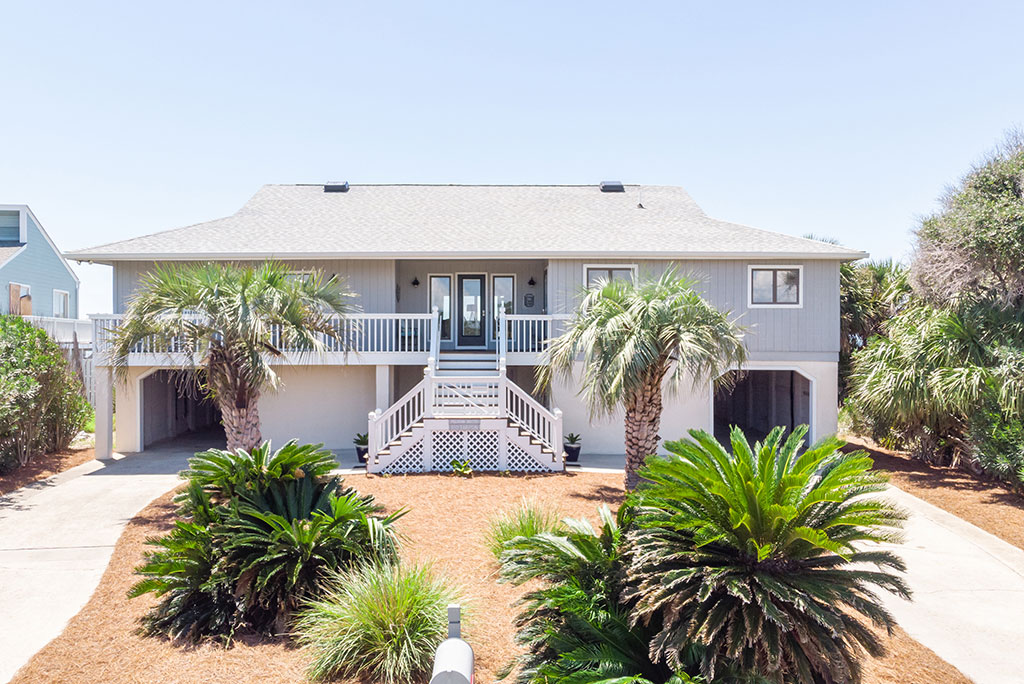6 Ways to Maximize Cash Flow on Rental Properties

With rising interest rates, increasing property taxes, and maintenance costs spiraling out of control, many landlords find themselves wondering if rental properties are still worth the hassle. Traditional financing often leaves rental investors trapped with high monthly payments that eat into cash flow. Conventional lenders scrutinize your personal debt-to-income ratio and cap your ability to scale regardless of how well your properties perform.
The good news: strategic investors are still finding ways to generate substantial cash flow despite these challenges. Here are six different ways to maximize cash flow on rental properties!
1. Optimize Your Financing with DSCR Loans
Most investors get stuck with suboptimal financing because they don't understand the alternatives. Conventional loans look at your personal income, limiting how many properties you can buy regardless of how well they perform. This caps your growth potential and unnecessarily restricts cash flow.
DSCR loans are underwritten based on property income rather than personal finances. This fundamental difference removes the limitations of debt-to-income ratios that prevent scaling with conventional loans. For investors looking to maximize cash flow, [researching current DSCR loan rates](link to your article) should be the first step before any acquisition.
Four key factors affect your qualification and rate:
● Credit score: Lenders view this as a reflection of your reliability in making payments on time
● LTV ratio: Higher down payments reduce lender risk and typically result in more favorable terms
● Property's actual DSCR: Higher income relative to expenses demonstrates lower default risk
● Loan amount: Many lenders offer tier-based pricing that rewards larger loan amounts The difference between optimal and suboptimal financing can equal hundreds of dollars monthly per property. On a portfolio of just five rentals, this could mean $1,000-2,000 in additional monthly cash flow simply by structuring your financing correctly.
Investors who fail to research financing options often leave significant money on the table throughout the entire ownership period of their investments.
2. Implement Strategic Rent Increases
The uncomfortable truth is that most landlords leave thousands of dollars on the table annually because they mismanage their rental pricing strategy. They either charge too little out of fear of vacancy or implement arbitrary annual increases that don't align with market conditions.
These problems compound over time. A property that's $100/month under market in year one is often $250-300/month under market by year three as market increases outpace your below market starting point.
Counter these issues with a data-driven approach:
● Create a formal rental market analysis for each property quarterly, not just at lease renewal
● Track rent trends by neighborhood, not just citywide averages that mask micromarket opportunities
● Develop a "rent reset" strategy for significantly under-market units using targeted improvements to justify the increase
● Segment your rental offerings with premium options (smart home features, upgraded appliances) that justify higher rates
The most effective landlords develop tiered pricing approaches. Rather than offering all units at a single price point, they create good-better-best options that capture more revenue from tenants willing to pay for additional features. Closing rental rate gaps requires methodical tracking. Properties that have been under-market for years may need strategic vacancies to reset rates completely a short-term pain for long- term gain that many investors are unwilling to endure.
3. Slash Operating Expenses Through Systematic Audits
Most rental properties leak profits through unnecessarily high expenses. According to industry analysis, the average rental has 15-20% in reducible expenses that owners never identify or address.
The biggest culprits include:
● Property Insurance Overpayment: Many investors accept renewal increases without shopping policies annually. Insurers count on this inertia, often increasing premiums 5-10% yearly when comparable coverage could be found at lower rates. Additionally, portfolio policies covering multiple properties can reduce per-property costs by 15-25% compared to individual policies.
● Property Tax Mismanagement: Assessments frequently overvalue investment properties, particularly after renovations when assessors may use neighboring owner-occupied comps. Filing tax assessment challenges can reduce annual payments by thousands, but fewer than 5% of investors consistently pursue this opportunity.
● Vendor Cost Inflation: Maintenance providers often charge rental owners 25-40% more than homeowners for identical services. Investors who don't establish standardized pricing agreements with preferred vendors typically overpay for routine repairs and replacements. Smart investors develop detailed replacement specifications (exact toilet models, faucet types, etc.) to standardize costs and prevent scope creep.
● Utility Inefficiencies: Properties with owner-paid utilities often harbor significant waste. Simple investments like programmable thermostats, water-efficient fixtures, and common area LED lighting typically deliver 100-200% annual ROI through reduced utility expenses. Conduct an expense audit for each property annually, line by line. Investors who implement rigorous expense management typically reduce operating costs by $75-150 per unit monthly—nearly $1,000 per door annually in pure cash flow improvement.
4. Convert Vacancy Periods to Renovation Opportunities
Vacancy is typically viewed solely as lost income. This limited perspective costs investors significant opportunity. Each turnover presents a strategic window for improvements that can permanently increase property value and cash flow.
The key is preparation. Having a pre-planned "vacancy response" strategy for each property allows you to immediately implement value-adding renovations during natural turnover cycles.
Effective vacancy opportunity planning includes:
● Maintaining an updated list of high-ROI improvements specific to each property
● Having contractors pre-selected and ready to execute during specific vacancy windows
● Preparing before/after marketing materials that justify increased rents to new tenants
● Creating a turnover timeline that minimizes days between tenants while maximizing improvement value
The most profitable improvements typically focus on kitchens, bathrooms, flooring, and energy efficiency. For example, a $3,500 kitchen refresh (new countertops, cabinet faces, and fixtures) can often support a permanent $150-200 monthly rent increase, delivering complete ROI in under two years while continuing to generate additional cash flow indefinitely.
Track the performance of your vacancy investments. Measure exactly how much additional rent each improvement supports and refine your strategy based on actual results rather than general assumptions.
5. Create Additional Income Streams From Existing Properties
Single-income rental properties represent a missed opportunity. Every property has potential for multiple revenue streams beyond the base monthly rent.
The most overlooked opportunities include:
● Storage Space Monetization: Garages, basements, attics and utility rooms can be sectioned into storage units renting for $50-150 monthly. A typical single-family home can often support 2-4 storage spaces with minimal setup costs, generating $1,200-3,600 in additional annual income.
● Parking Premiums: In areas with limited parking, designated or covered spaces can command $75-200 monthly. Converting underutilized yard or driveway space into additional parking can generate significant returns with minimal investment.
● Service Package Additions: Services like lawn care, snow removal, or basic cleaning can be offered at a premium over market rates. The convenience factor allows for 15-25% markups over direct service costs.
● Furnished Unit Conversion: In markets with transitional residents (traveling nurses, corporate relocations, etc.), furnished units command 30-50% rent premiums. The initial investment typically recovers within 6-12 months, after which the premium becomes pure profit.
● Technology Upgrades: Smart home technology packages (keyless entry, networked thermostats, security systems) can support $50-100 monthly premiums while simultaneously reducing turnover and property damage. The key is implementing these additional revenue streams systematically rather than haphazardly. Track setup costs, ongoing maintenance requirements, and actual revenue generated to identify which supplemental income sources deliver the highest ROI for your specific properties.
6. Minimize Turnover Through Tenant Retention Programs
Tenant turnover creates the single largest cash flow drain for most rental properties. Every turnover costs between 2-3 months of gross rent between lost income, turnover expenses, and leasing costs. For a property renting at $1,500 monthly, each turnover represents $3,000-4,500 in lost cash flow. Properties with annual turnover effectively lose 15-25% of their potential gross income, a staggering figure that compounds with each unit and property.
Combat this with structured tenant retention strategies:
● Renewal Incentive Programs: Offer graduated lease renewal bonuses that increase with each subsequent renewal. Even modest incentives ($100-200) significantly influence renewal decisions while costing far less than turnover expenses.
● Proactive Maintenance Protocols: Develop systems that address maintenance issues within 24-48 hours. Maintenance responsiveness ranks among the top factors in tenant satisfaction and renewal decisions.
● Tenant Communication Systems: Implement regular check-ins and property update communications. Tenants who feel informed and respected are far more likely to renew regardless of minor rent increases.
● Property Improvement Schedules: Create and share multi-year property enhancement plans with tenants. Knowing that improvements are coming increases perceived value and strengthens retention.
● Lease Structure Optimization: Design lease agreements that encourage longer initial terms and easier renewals. Options like 18-24 month initial leases with simplified renewal processes can reduce turnover frequency by 30-40%.
Reducing annual turnover from 50% (industry average) to under 25% can add $1,000-1,500 in annual cash flow per unit simply by eliminating the costs associated with replacing tenants.
Conclusion
While the rental property landscape presents significant challenges, the six strategies above can transform struggling investments into strong cash-flowing assets. The most immediate impact typically comes from optimizing your financing structure a critical first step that can potentially save you thousands annually per property. By systematically implementing these approaches, you can not only survive in today's challenging rental market but potentially thrive with stronger cash flow than ever before.
Additional Find Rentals Articles
A Quick Overview of LEGOLAND
by Deborah Nelson
Finding a Rental Apartment Amid the COVID-19
by Kelly Reed
Lido Key Florida Travel Guide
Lido Key Florida










